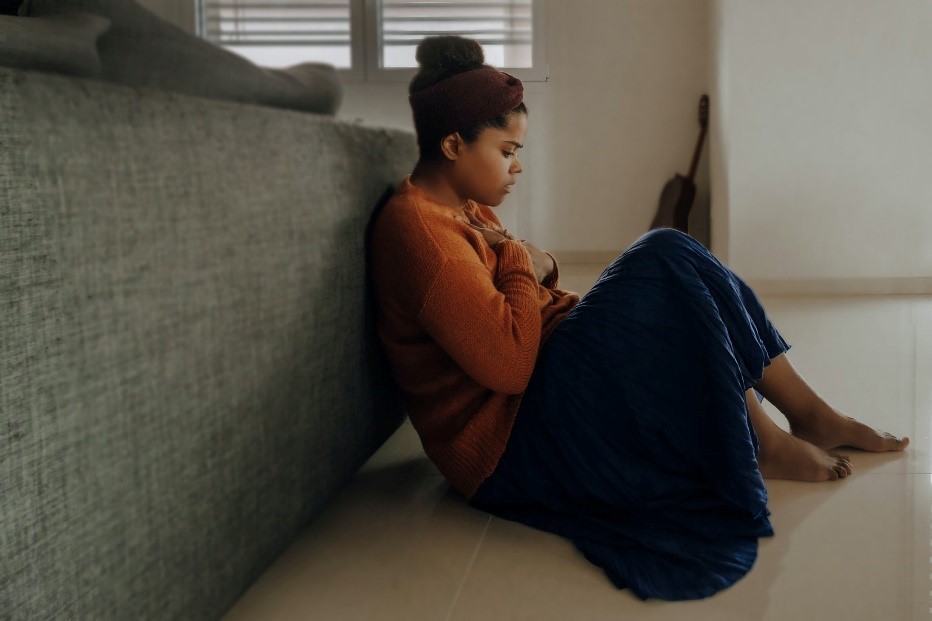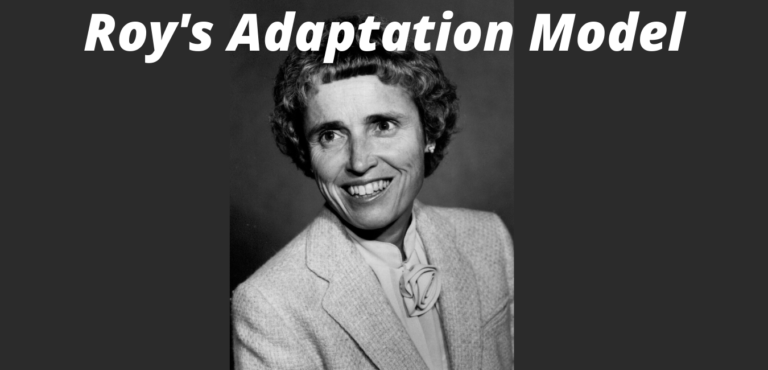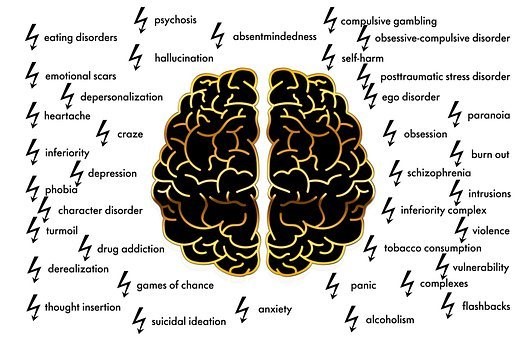Nursing Interventions & Care Plan for Anxiety- Student Guide
Introduction
Anxiety is a human response to stressful events, but it can be debilitating when it begins to interfere with daily life. Anxiety disorders are the most common mental illness in the United States, affecting more than 40 million people of all ages. The good news is that there are many ways you can help someone who has an anxiety disorder manage this condition so they can lead a whole life.
This blog post will provide a detailed overview of nursing interventions and care plans for anxiety. The goal is to help medical practitioners better understand and manage this condition in their patients. Anxiety is NOT normal; if you’re struggling with these symptoms, please seek professional help! Also, as you read, keep in mind that our professional nursing writers are ready to help with your nursing assignment in case you get stuck. All you need to do is place an order with us.
Disclaimer: The information presented in this article is not medical advice; it is meant to act as a quick guide to nursing students, for learning purposes only, and should not be applied without an approved physician’s consent. Please consult a registered doctor in case you’re looking for medical advice.
What is Anxiety Disorder?
Anxiety is a stress response. In healthy individuals, the effects of anxiety are temporary and do not cause lasting harm – such as rapid heart rate, clammy hands, or nausea. However, for anxiety disorder patients, these changes remain long past the stressful event has ended and therefore begin to interfere with daily life.
Anxiety disorders are the most common mental illness in the United States, with more than 40 million (18%) adults affected by an anxiety disorder during the last year. Anxiety disorders can occur at any time and often begin during childhood or adolescence. The World Health Organization predicts that by 2020, the number of people with an anxiety disorder will be greater than those with HIV/AIDS, diabetes, and cancer combined.
In the DSM-5 (Diagnostic Statistical Manual), the primary disorders that fall under the category of “anxiety disorders” include:
• Panic Disorder
• Agoraphobia
• Generalized Anxiety Disorder (GAD)
• Obsessive-Compulsive Disorder (OCD)
• Post-Traumatic Stress Disorder (PTSD)
Related Conditions to Consider
• Chronic Fatigue Syndrome
• Insomnia
• Restless Leg Syndrome
What Are the Physical Symptoms of Anxiety?
Physical symptoms of anxiety include:
• Palpitations
• Clammy hands or clammy forehead
• Sweating
• Trembling/Tremors
• Nausea, stomach/abdominal pain
• Chest pain or discomfort
• Dry mouth, throat, or mouth


What Are the Psychological Symptoms of Anxiety?
Psychological symptoms of anxiety include:
• Feeling tense all over or restless
• Difficulty concentrating
• Feeling like you have to do something but don’t know what it is
• Irritability/Anger
• Nervousness
• Impatience or frustration
What Are Some of The Common Stressors That Can Cause Anxiety?
Some everyday stressors that may cause anxiety include;
• Family conflicts (e.g., divorce, arguments between parents)
• Work-related stress (e.g., deadlines, feeling overworked or overwhelmed)
• Natural disasters (i.e., flood, hurricane, extreme weather)
• Financial problems (i.e., losing a job, filing bankruptcy)
• Barriers to employment (i.e., discrimination, lack of support)
What Are the Effects of Anxiety?
Anxiety disorders can have serious effects on an individual’s quality of life and ability to participate in everyday activities:
• Difficulty sleeping or nightmares
• Fatigue/Feeling run-down
• Change in appetite and weight
• Headaches, stomach pains, or backaches
• Frequent urination/Constipation
• Muscle tension/Aches and pains
• Trouble with concentration
Examples of Nursing Care Plans
If you are a medical practitioner, please refer to the following case scenarios for examples of care plans.
Case Study 1:
A 35-year-old female has been experiencing significant anxiety about her health for the past six months with symptoms that include;
• Severe headaches • Stomach pains • Muscle tension • Excessive sweating during stressful situations • Fear of losing control or going crazy
Step One:
Since the patient has persistent and severe symptoms, she should be referred to a psychiatrist for specialist treatment and diagnosis. The psychiatrist will assess the patient’s medical history and current mental state and talk through any anxiety-related experiences of the patient to reach an accurate diagnosis.
What Are the Most Common Disorders that Cause Anxiety?
The most common disorders that cause anxiety include:
Panic Disorder:
Prevalence 6%-8% of the population, onset is usually in late adolescence or early adulthood. 80% of people with panic disorder have a lifetime history of at least one major depressive disorder, and 40%-45% recover entirely from their first episode without a second.
Generalized Anxiety Disorder (GAD):
Prevalence 3%-5%, onset usually occurs between the ages of 30-50. It is also more common in women.
Obsessive-Compulsive Disorder (OCD):
Prevalence 1%-2% of the population, onset usually occurs before age 18.
Post-Traumatic Stress Disorder (PTSD):
PTSD can occur at any age. It is more common in women, and can last a lifetime. It is triggered by a terrifying event that causes you to feel intense fear, helplessness, or horror.
Case Study 2:
A 27-year-old female performs her job as an airline pilot with ease; however, she experiences severe anxiety when flying over large bodies of water or in bad weather.
Step One:
The therapist will assess the patient’s medical history and current mental state and talk through any anxiety-related experiences of the patient to reach an accurate diagnosis. The most common disorders that cause anxiety include:
• Agoraphobia Generalized Anxiety Disorder (GAD):
Prevalence 3%-5%, onset usually occurs between the ages of 30-50. It is also more common in women.
Obsessive-Compulsive Disorder (OCD):
Prevalence 1%-2% of the population, onset usually occurs before age 18.
• Specific Phobia:
The most common are snakes phobias (ophidiophobia), spiders (arachnophobia), mice/rats (musophobia), and dogs (canine-specific phobia or cynophobia).
• Agoraphobia:
Fears of being in an open place and not being able to escape if needed. Common fears are heights, bridges, crowds, or public places. In severe cases, the person may be housebound.
• Social Phobia:
Fears of interacting with other people, being judged or humiliated.
• Specific or Obsessive-Compulsive Disorder:
Repeated thoughts and behaviors that a person can’t control or make go away. Common obsessions are contamination, symmetry, orderliness, and germs. Common compulsions include repetitive washing, counting, checking, and touching rituals. People with this condition are usually very distressed.
You may also check care plans for Hip Fracture
Anxiety Nursing Diagnosis
The following nursing diagnosis may be relevant to the patient in Case Study 1:
Disturbed Bodily Function Related to Anxiety (Anxiety)
• Description: The patient is experiencing anxiety, causing changes in their physical functioning, such as muscle tension and excessive sweating.
• Implications: The patient is experiencing severe anxiety symptoms affecting their ability to perform aerobic physical activities.
• Risk Factors for Problem: The patient is at risk of having a more severe anxiety episode because effective coping strategies are not used to manage stressors.
The following nursing diagnosis may be relevant to the patient in Case Study 2:
Fear
•Description: The patient experiences fear when flying in bad weather or over the ocean.
• Implications: The patient uses avoidance behaviors to help reduce their fear but will eventually be faced with another fearful situation. Treatment should focus on reducing the intensity of this fear.
• Risk Factors for Problem: The fear is primarily an anxiety-based phobia instead of an actual fear.
In both cases, the above nursing diagnoses can be used as a framework to begin treatment of the patient’s anxiety problem.
What Are the Anxiety Nursing Interventions?
Nursing interventions and a care plan for anxiety can be tricky. This is because anxiety symptoms are subjective, but some universal interventions have been proven to help reduce anxiety symptoms. These include:
- Educate the patient about their diagnosis and treatment options.
- Provide reassurance that anxiety disorders are treatable.
- Encourage patients to maintain daily routines as much as possible, even with reduced energy levels or work hours.
- Handling day-to-day stresses more effectively by using coping mechanisms like deep breathing, meditation, exercise, etc.
- Engaging in pleasant activities during free time (e.g., watching television) to help reduce boredom and loneliness
• Help the patient to identify what situations, thoughts, or feelings cause them to experience an increase in their level of anxiety (using cognitive-behavioral therapy – CBT). The goal is to eventually identify what triggers their anxiety and help them learn to cope with it more effectively.
• Encourage the patient to find relaxation techniques that work for them (may include breathing exercises, yoga, and meditation).
• Provide the patient with information on sleep hygiene: to promote good-quality sleep, it is essential to establish a regular sleep schedule.
Healthy Sleep Guidelines:
• Make a routine to go to bed and wake up at the same time every day.
• Set your bedroom temperature at around 18˚C – 20˚C · Keep your bedroom free from noise, light, distractions (TV) and pets.
• Exercise during the day and calm down in an hour or two before going to bed.
• When your mind is racing before you sleep at night, try some deep breathing or relaxation exercises.
• Avoid worrying about things that have happened during the day.
• Try not to worry about things that may happen the next day.
• You should also try not to go to bed worrying about what you have just been thinking about.
• If you are still awake after 20 minutes or so, get up and do some reading, listen to music or have a warm, relaxing bath.
• Set the alarm for your usual wake-up time. Follow that schedule on weekends as well as weekdays.
While this information appears straightforward, it is common for patients who suffer from anxiety disorders not to follow these healthy sleep guidelines. Nurses must provide education on healthy sleep habits and reinforce these recommendations to their patients when appropriate.
Which Nursing Interventions Would Help Decrease Anxiety?
• Encourage the patient to list things they can do when anxious, such as counting their breaths or taking slow, deep breaths.
• The patient should also sleep more regularly and avoid doing things in the evening that are likely to increase alertness (i.e., no caffeine, no exercise right before going to bed).
• The patient should try not to eat, drink or smoke in the hour before sleep, and they should avoid alcohol at night.
• Avoid daytime naps if possible, as they will interfere with sleep at nighttime.
• Try to set aside time for yourself and avoid becoming overly busy.
• It is also essential to reduce the number of distractions, such as getting rid of excess clutter or turning your cell phone off at night.
How Can Anxiety Be Treated with Nursing Interventions?
Helpful nursing interventions include:
-Teach the patient and their family to identify the early warning signs of anxiety (i.e., before a full-blown panic attack).
-Encourage the patient to employ one or more coping strategies they have learned in their treatment plan.
A valuable way to educate the patient about anxiety is through Relaxation Response, which Dr. Herbert Benson of Harvard University developed.
Dr. Benson discovered that many anxiety disorders were caused by a hyperactive stress response, in addition to an over-reaction to normal bodily reactions such as increased heart rate, respiration, and perspiration during times of stress or fear.
These symptoms are part of the body’s “fight or flight” reaction. At the same time, it is normal for the body to react in this way. If there are repeated incidents where the individual experiences these symptoms outside of imminent danger (i.e., fear or anxiety), it will result in chronic physiological arousal that may become a diagnosable disorder.
The Relaxation Response trains patients to harness their own natural built-in healing processes by teaching the basic physiological techniques to counteract the fight or flight response. The patient is taught how to use deep breathing, progressive muscle relaxation, and mental imagery (i.e., picturing a peaceful place or activity such as walking on the beach).
The Relaxation Response Consists of Four Stages:
Stage 1: Attention (drawing a patient’s attention to their breathing or counting from one to ten).
Stage 2: Initial Tension (inhaling and exhaling deeply, repeating silently to oneself several times: “my tension is increasing”).
Stage 3: Descending Awareness (deeply relaxing major muscle groups of the body, starting with the shoulders, then proceeding to the neck, and so on).
Stage 4: Complete Relaxation (when all tension is released from the body).
The rationale behind both strategies (i.e., Relaxation Response and Progressive Muscle Relaxation) is that the patient will learn to relax their body in times of stress or anxiety through repeated practice of these techniques over time. As patients are taught how to relax their bodies through these techniques, they will experience fewer anxiety symptoms related to increased physiological arousal.
Also, check nursing interventions for Acute Renal Failure
Treatment for Anxiety Disorder
1. Medication
Medications are often prescribed in addition to psychotherapy for treating patients with an anxiety disorder. The medicines that are most commonly used include the following: benzodiazepines (e.g., diazepam), beta-blockers (e.g., propranolol), tricyclic antidepressants (TCAs), and serotonin reuptake inhibitors (i.e., SSRIs).
In addition, drugs that are designed to work on the hormonal balance of patients with anxiety disorders, such as Selective Serotonin Reuptake Inhibitors (SSRIs) or Beta Blockers (propranolol/nadolol), are also becoming more commonly used in the treatment of anxiety disorders.
The drugs mentioned above have all been proven to be effective in reducing patients’ anxiety symptoms. They do so by several mechanisms, such as blocking neurotransmitters involved in developing panic attacks (e.g., beta-blockers) or increasing neurotransmitter levels in the brain (i.e., SSRIs).
2. Therapeutic Components
One component is providing information on what anxiety disorder is and how patients should manage their symptoms and myths that they might have about anxiety disorders (if they have not been adequately educated about them).
The second component involves the provision of psychoeducation on relaxation techniques. These include progressive muscle relaxation and deep breathing, as well as cognitive restructuring.
Thirdly, patients should be provided with a specific plan for managing their anxiety disorder on a day-to-day basis. Lastly, patients should be provided with the skills to monitor their success in managing anxiety.
3) Pharmacotherapy
Pharmacotherapy involves prescription drugs (described above) to inhibit panic attacks and extreme fear or anxiety episodes. In addition, pharmacotherapy provides a means for patients suffering from an anxiety disorder that is severe enough to require medical attention to normalize their physiological functioning.
Both anxiolytics and antidepressants effectively treat patients with anxiety disorders, including panic disorder, social phobia, obsessive-compulsive disorder (OCD), post-traumatic stress disorder (PTSD), and specific phobias.
Typical treatments include administering benzodiazepines (e.g., clonazepam, lorazepam) and SSRIs (e.g., sertraline).
4) Cognitive-Behavioral Therapy
This involves explaining to patients how their thoughts, feelings, and behaviors are interconnected in developing anxiety disorders such as social phobia, panic disorder, obsessive-compulsive disorder, and post-traumatic stress disorder.
In addition, patients are taught techniques to reduce their exposure to the situations or stimuli that trigger anxiety symptoms to eliminate them from occurring.
The rationale behind this strategy is that patients will think differently about their anxiety experiences if they understand how it develops. They will also be able to change maladaptive beliefs and behaviors (i.e., avoidance) to prevent the recurrence of panic attacks or anxiety responses.
5) Mindfulness/acceptance-based Techniques
This technique involves teaching patients how to overcome their fear by accepting their anxious thoughts and emotions rather than trying to change the content of those thoughts. By accepting their fears and learning to live with them, patients will stop resisting these thoughts and experiences.
Practicing mindfulness skills helps overcome panic disorders because it encompasses many of the treatment components listed above, including exposure therapy (i.e., non-avoidance) and cognitive-behavioral therapy (i.e., learning to change maladaptive thoughts).
In addition, patients practice accepting their symptoms and resist giving in to the urge to avoid them while being exposed to them in a controlled manner. Over time, more patients are exposed to anxiety trigger situations without withdrawing or avoiding them. The less threatening such conditions will be to them.
6) Interoceptive Exposure
Interoceptive exposure involves presenting anxiety-provoking stimuli that usually increase bodily sensations (e.g., heart palpitations, shortness of breath). These symptoms are then presented during a session with physical measures of physiological arousal (i.e., heart rate) taken immediately afterward. This helps patients observe that their reaction to the stimuli is exaggerated and affects their physical health (e.g., increased heart rate).
The rationale behind this strategy is that by observing a discrepancy between how they feel about an anxiety trigger and how it impacts them physically, patients will revise their interpretation of its meaning. They will also alter their pessimistic predictions about how they expect to feel and behave towards it (i.e., cease fearful prediction errors).
7) Mindfulness-Based Cognitive Therapy
This is a means for patients suffering from an anxiety disorder to learn how to reason about their anxious thoughts differently. Through this type of therapy, patients are taught how to relax and accept their anxiety responses while also learning how to transform negative thinking patterns into more positive and balanced ways of thinking.
Mindfulness-based cognitive therapy involves educating the patient about common panic attacks symptoms, normalizing them through a process known as decatastrophizing, and then instructing the patient on how to acknowledge and observe them appropriately.
In tandem with this strategy, patients are also encouraged to practice accepting these symptoms to reduce their fear. For instance, a patient may be instructed to focus on the sensations connected to a panic attack to observe and understand the nature of these uncomfortable feelings.
Ps: You may also check the nursing treatments for appendicitis
Conclusion
Anxiety is a stress response. Some universal interventions have been proven to help reduce the symptoms of anxiety. These include educating patients about their diagnosis and treatment options, providing reassurance, encouraging them to maintain daily routines as much as possible even with reduced energy levels or work hours. Teach them how to handle day-to-day stresses more effectively by using coping mechanisms like deep breathing, meditation exercise, etc.
If you’re struggling with high levels of anxiety, you must know what your triggers are so that you can avoid them or find new ways of dealing with them. It’s also worth talking about therapy which may help reduce your level of anxiety over time if done correctly.
Lastly, we recommend that you check the nursing leadership styles to better position yourself as a nurse leader, as well as nursing metaparadigms to master the nursing philosophy and advance your career.
Also, in case you prefer our top nursing writers to handle your assignment, click the “Do my Nursing Assignment” button below and follow the simple steps. Good luck!







